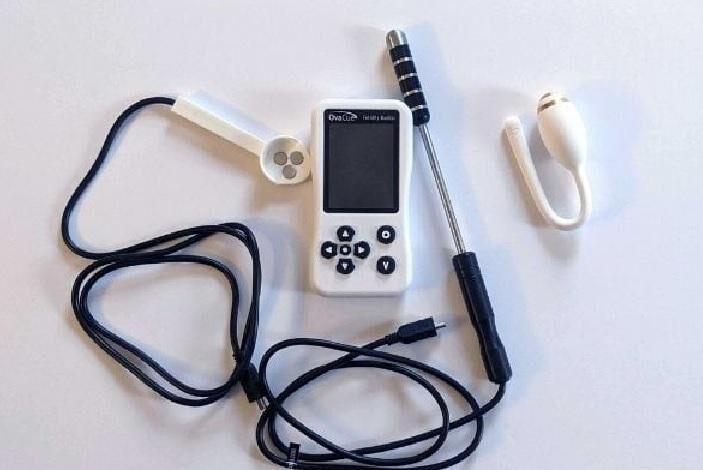Europe Infertility Diagnostics Devices Market: Key Growth Drivers, Trends, and Leading Players

Infertility is becoming an increasingly prevalent issue in Europe, with a significant percentage of couples facing difficulties conceiving. Factors such as lifestyle changes, delayed parenthood, and environmental influences contribute to rising infertility rates, driving demand for effective diagnostic solutions. The Europe infertility diagnostics devices market is anticipated to grow at a robust CAGR of 8.80% from 2024 to 2032, with many advancements expected in diagnostics technology and clinical research. This article explores the growth drivers, key trends, and leading players in the European market, as well as what the future holds for infertility diagnostics.
1. Why is the Europe Infertility Diagnostics Devices Market Growing?
The Europe infertility diagnostics devices market is driven by a variety of social, environmental, and technological factors:
- Delayed Parenthood: Many couples are choosing to delay parenthood, whether for career progression, financial stability, or personal choices. This trend has resulted in higher infertility rates as fertility declines with age.
- Lifestyle and Environmental Influences: Factors such as high-stress levels, sedentary lifestyles, poor dietary habits, and exposure to environmental pollutants have significant effects on reproductive health. Many couples in Europe are now turning to diagnostic devices to assess fertility health and address issues early.
- Increased Awareness and Acceptance: The stigma around infertility has lessened in recent years, thanks to campaigns and educational initiatives. This increase in awareness has led more individuals to seek out diagnostic testing as part of family planning.
2. Key Trends Shaping the Europe Infertility Diagnostics Devices Market
- Technological Innovations: Advancements in molecular diagnostics, imaging technologies, and even artificial intelligence (AI) are making diagnostics more precise. For example, AI is increasingly being used to analyze fertility data and identify potential issues more quickly and accurately.
- Growth of Home-Based Testing Solutions: More consumers are opting for home-based fertility tests, which offer convenience and privacy. These kits are popular for preliminary fertility assessments and are expected to grow significantly as technology enables more accurate home testing solutions.
- Collaborative Research and Partnerships: Companies are joining forces with research institutions, fertility clinics, and universities across Europe to drive innovation. These partnerships not only enhance diagnostic capabilities but also improve accessibility by expanding the range of testing solutions available.
- Focus on Personalized Diagnostics: Tailoring diagnostics to the individual is becoming a key trend, with companies developing tests that factor in specific genetic and environmental profiles. Personalized diagnostics allow for more targeted and effective treatment options, ultimately improving outcomes for patients.
3. Market Segmentation: Device Types and Key End-Users
The Europe infertility diagnostics devices market can be segmented by device type and end-users:
- Device Types
- Imaging Systems: Advanced imaging technologies like ultrasound and MRI are essential for identifying structural abnormalities affecting fertility.
- Sperm Test Kits: These kits analyze sperm count, motility, and morphology, providing critical insights into male fertility.
- Ovulation Test Kits: Tracking ovulation is a key aspect of fertility assessment. Ovulation kits detect hormone surges to pinpoint the most fertile days in a woman’s cycle.
- Reagents and Media: Used in laboratories for various diagnostic tests, reagents and media ensure accuracy in identifying fertility issues.
- End-User Segments
- Fertility Clinics: Specialized clinics account for the majority of infertility diagnostic services in Europe, offering a comprehensive range of tests and treatments.
- Hospitals and Diagnostic Centers: Equipped with high-tech diagnostic devices, hospitals and diagnostic centers are widely used by patients seeking fertility assessments.
- Home Users: Home-based testing is a growing segment as more couples seek convenient, preliminary fertility assessments before consulting healthcare providers.
4. Regional Market Insights: Why Europe is a Leading Market
Europe holds a significant market share in infertility diagnostics devices, with key countries like Germany, the UK, and France leading due to advanced healthcare infrastructure and supportive government policies.
- Regulatory Frameworks: The European Union’s strict medical device regulations ensure that diagnostics products meet high safety and quality standards. While this can be challenging for manufacturers, it also enhances consumer trust in fertility products available in the region.
- Government Support for Fertility Treatments: Many European countries offer partial coverage or subsidies for infertility testing and treatments, making diagnostic solutions more accessible and affordable.
- Varying Demand Across Regions: Demand for diagnostics devices varies by country, influenced by factors such as cultural norms, healthcare infrastructure, and regulatory policies. This creates a dynamic market landscape with diverse growth opportunities across Europe.
5. Competitive Landscape: Leading Players and Their Market Strategies
Several key players dominate the Europe infertility diagnostics devices market, contributing to innovation and growth:
- Cook Group: A leader in fertility diagnostics, Cook Group focuses on advancing diagnostics technologies and supporting fertility research through partnerships.
- Vitrolife: Known for its high-quality diagnostic solutions, Vitrolife collaborates with clinics and research institutes to expand its product portfolio and enhance diagnostics capabilities.
- Thermo Fisher Scientific: A global giant in healthcare diagnostics, Thermo Fisher offers a broad range of fertility testing solutions, leveraging its extensive R&D capabilities.
- Hamilton Thorne LTD: This company specializes in high-precision diagnostic tools for fertility clinics and laboratories, helping to improve outcomes for patients.
- FIJIFILM Irvine Scientific: FIJIFILM is investing in cutting-edge diagnostics technology, with a strong emphasis on improving the accuracy and efficiency of reproductive health diagnostics.
6. Future Outlook: Emerging Trends and Growth Opportunities
Looking ahead, the Europe infertility diagnostics devices market is poised for continued growth as technology evolves and demand for personalized diagnostics increases. Here are some key trends expected to shape the market’s future:
- AI and Big Data Integration: Artificial intelligence and data analytics are becoming integral to fertility diagnostics, helping providers analyze complex data sets quickly and identify patterns that may affect fertility.
- Wearable Fertility Monitors: Wearable devices that monitor hormone levels, temperature, and other physiological signals are gaining popularity, providing real-time insights into reproductive health.
- Expansion of At-Home Testing Kits: As more consumers opt for at-home solutions, diagnostic kits are expected to become more sophisticated, offering lab-quality results and actionable insights from the comfort of home.
- Personalized Fertility Treatments: Tailored diagnostics will allow for more precise fertility treatments, addressing unique individual factors and improving the chances of successful conception.




